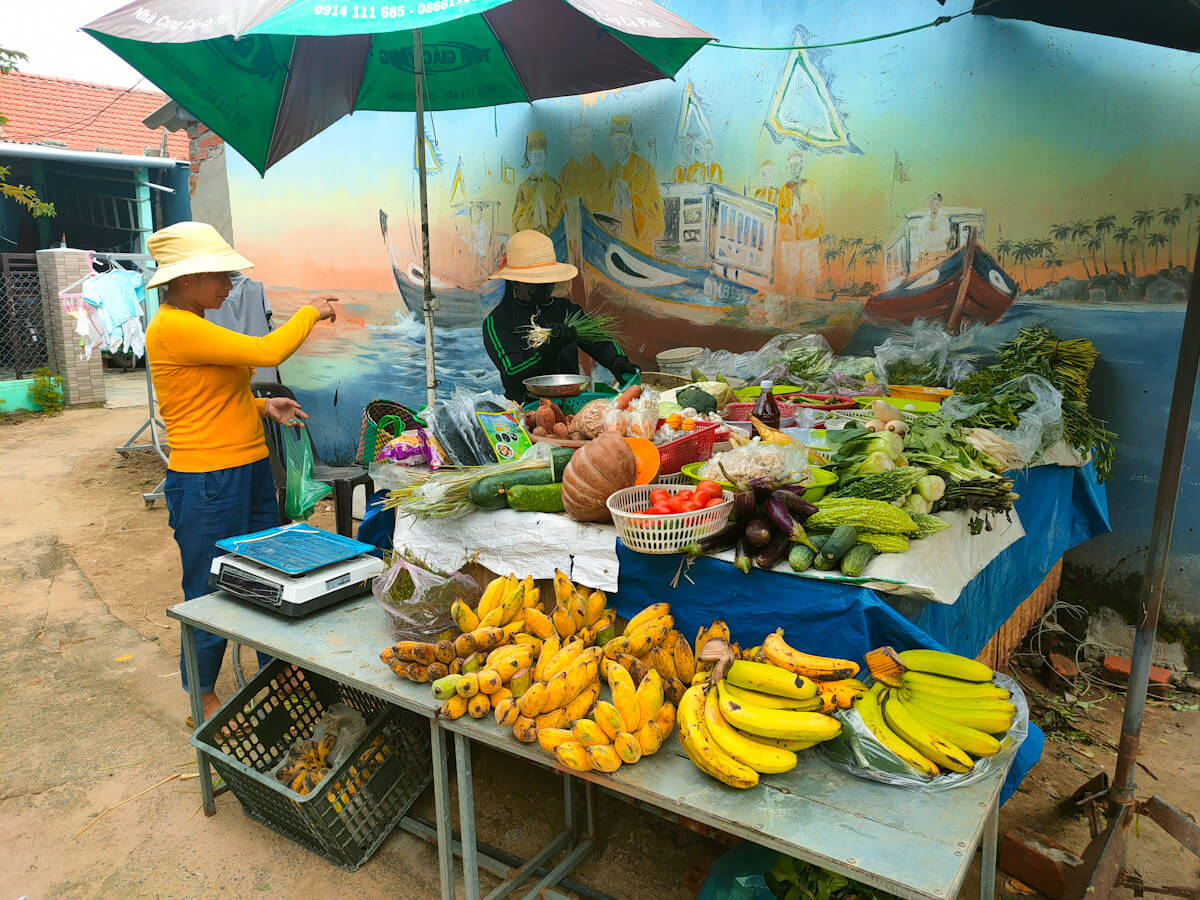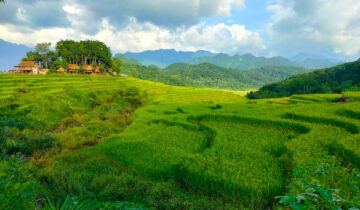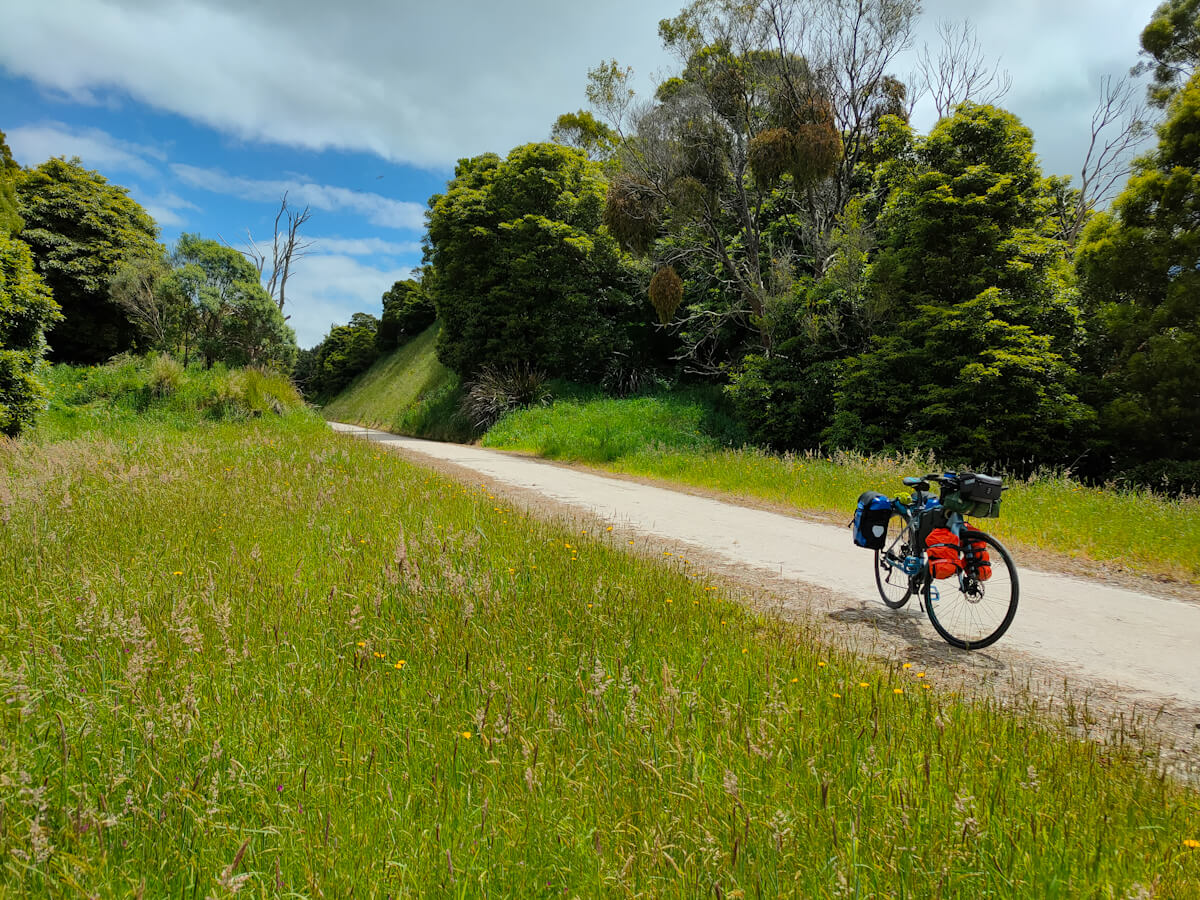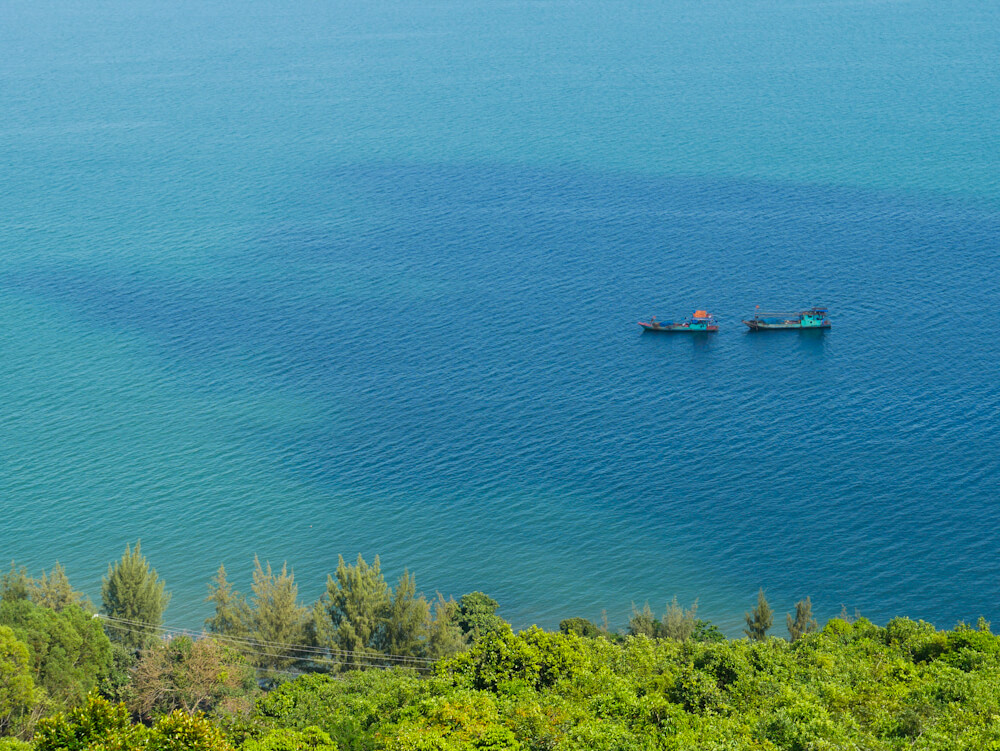Not just one ferry but two as I journey across Tam Hai island and another cute fishing village Meanwhile Vietnam’s stormy centre starts to take a toll and I make a big decision to skip ahead on my route.
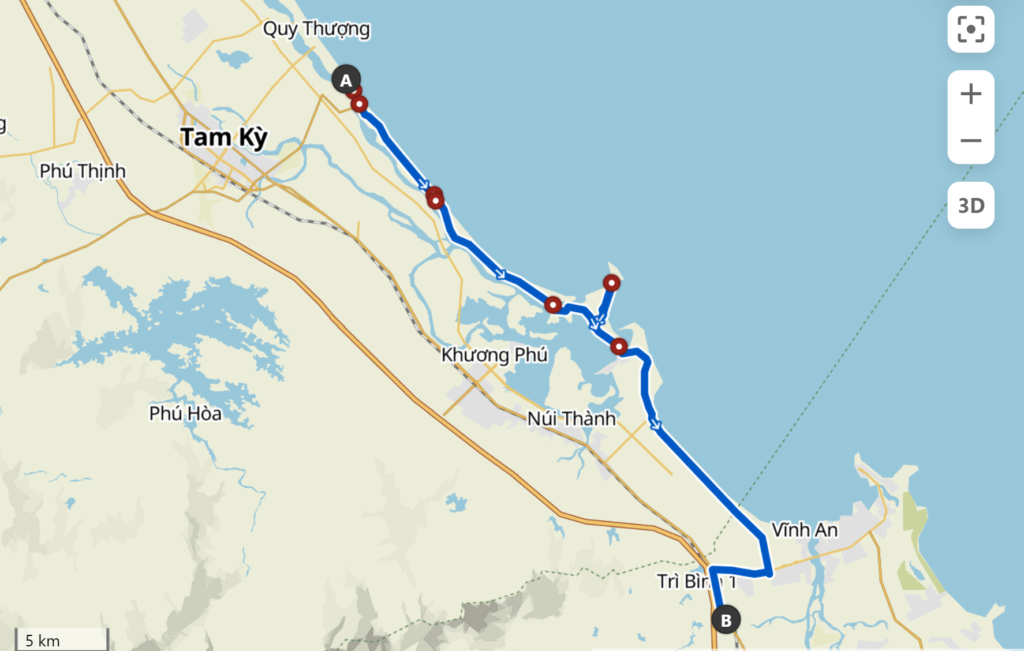
As I moved through central Vietnam, a heavy, crushing weight of humidity and low pressure had seemed to be pushing me into the ground.
Maybe it was the combined effect of weeks’ of touring, but I felt like each storm system that rolled through was like a punch in the gut.
The effects on my mind and body seemed more physical than just ‘cycling in the rain’ and my theory was that the humidity and massive changes in barometric pressure were a big part of that.
Even the vegetation, so bright and breezy during my other trips to this part of Vietnam, looked bland and tinged with grey.
BUT I was also excited to cycle the Tam Hai Island and discover the quaint, sleepy, Vietnamese coastal villages of my imagination, the kind that time forgot.
An I reckon I found them on this route, which (up to a point) was perfect for cycling.
Story of a mural village
Heading out of Tam Thanh I cycled on a dead straight road on a narrow, sandy strip of land between sea and river.
But not before a morning coffee stop off at the breezy Café Song where I browse the photo display documenting the original 2016 street art project which saw a collaboration between Korean and Vietnamese artists to transform the village. The photos are faded but inspiring and the energy of the painters shines through.
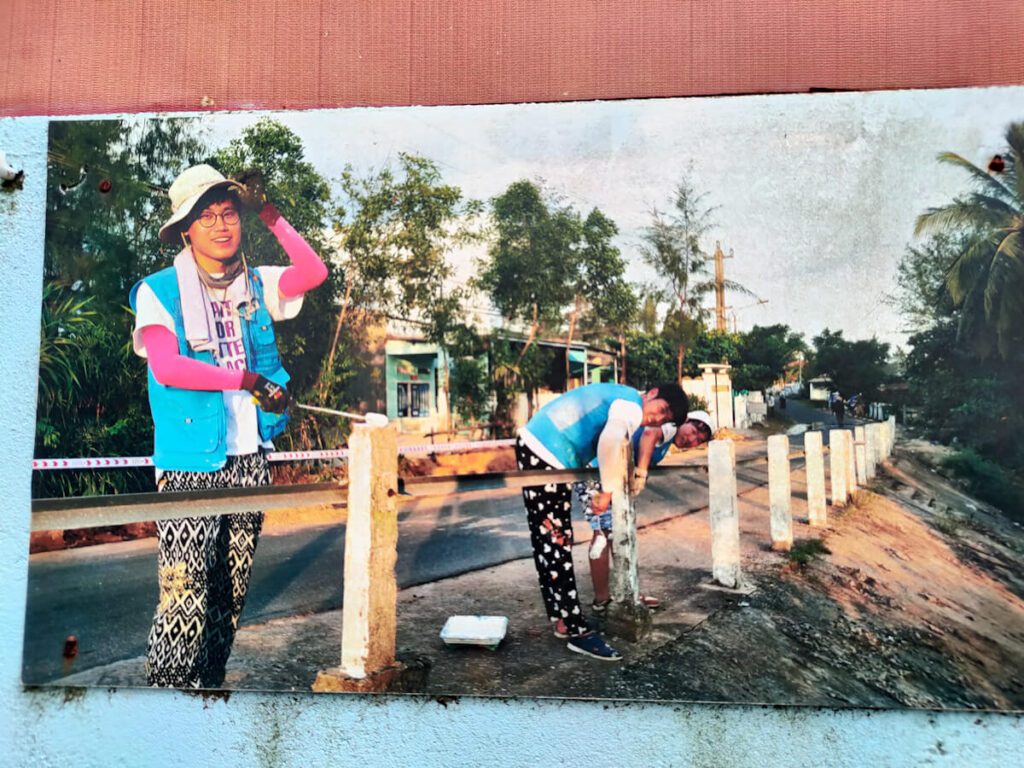
Faded walls take over as Hoi An fades away
I stop off at a silent but beautiful fishing village where blues, yellows and mottled stone dominate the flat-roofed homes and fat coils of rope or huge bundled nets lie in front yards.
The slick paint jobs and heritage restorations of Hoi An are already a distant memory.
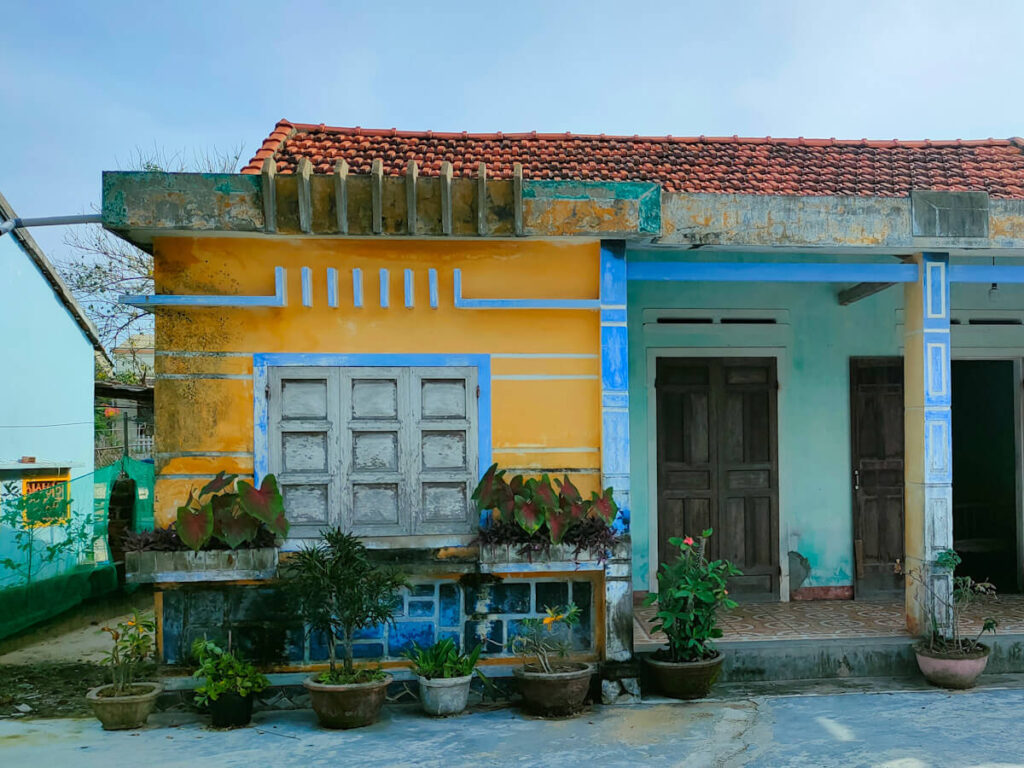
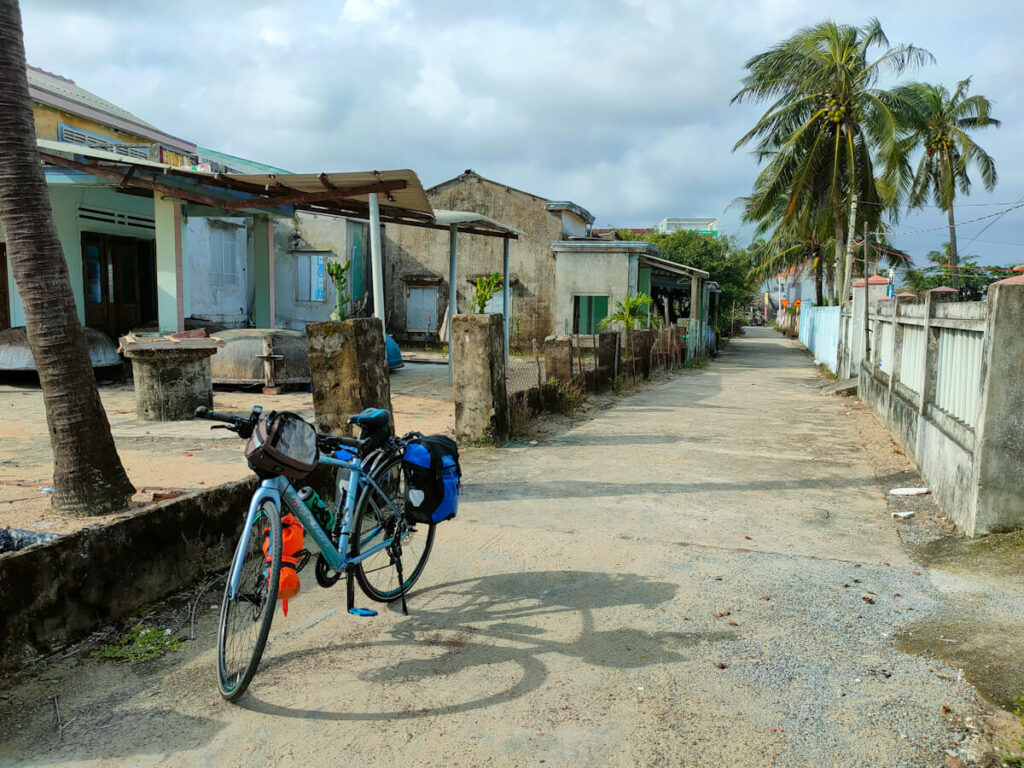
Ubiquitous but still photogenic, painted fishing boats shelter in the river, not far here from a huge lagoon.
Ferry to Tam Hai
The long, straight road ends at the ferry terminal, where (having just missed a boat) I wait for around 20 minutes in the shade of a refreshment stall.
There I have the wonderful company of a cheeky character who despite our lack of shared language makes the time pass with laughter. We take selfies to while the time away and his eyes twinkle in delight.
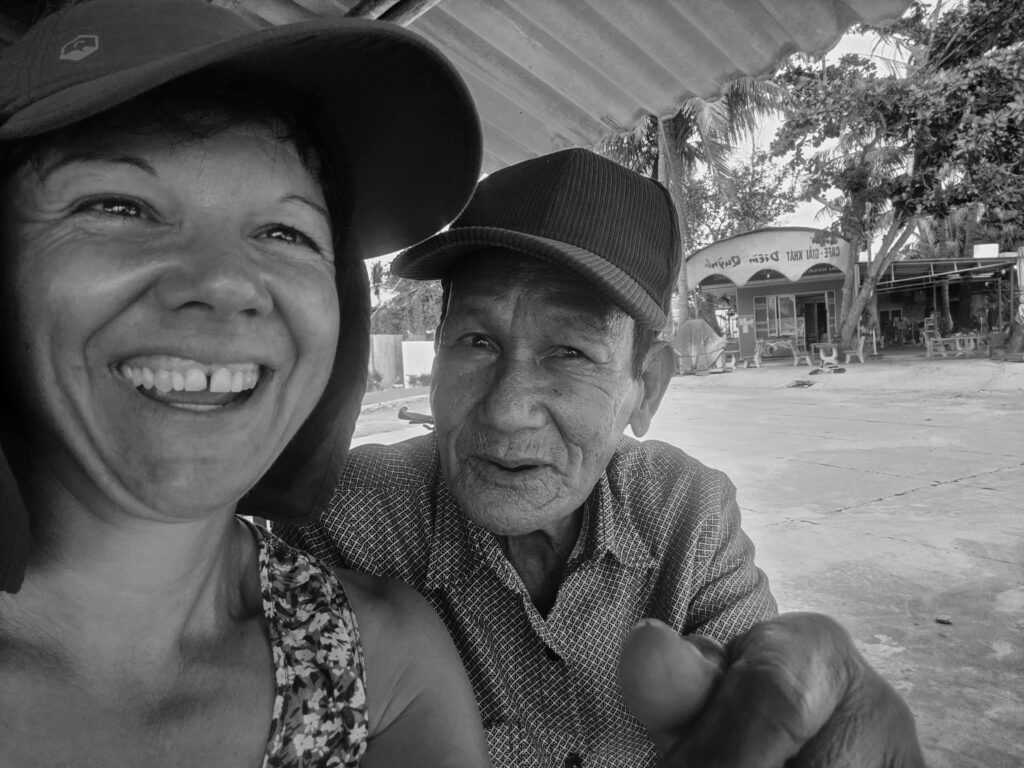
It might be tempting to make a beeline across Tam Hai Island to reach the southern ferry and the mainland, but that would be a shame.
At the other end of the island lies a picturesque village (maybe the one from my imagination) and I hang out for a bit at the coffee shop where a serious game of cards is in full swing.
There is a beach here, and a very nice looking guesthouse, the Nha Nghi Khanh Duong, where I’d originally intended to stay. While the village is as tidy as can be, the beach was heavily covered in storm debris, which I’d hope would be cleared away as post-pandemic tourists return.
Here, too, are murals painted as part of the Korea-Vietnam art project, and I particularly loved these swimming boys.
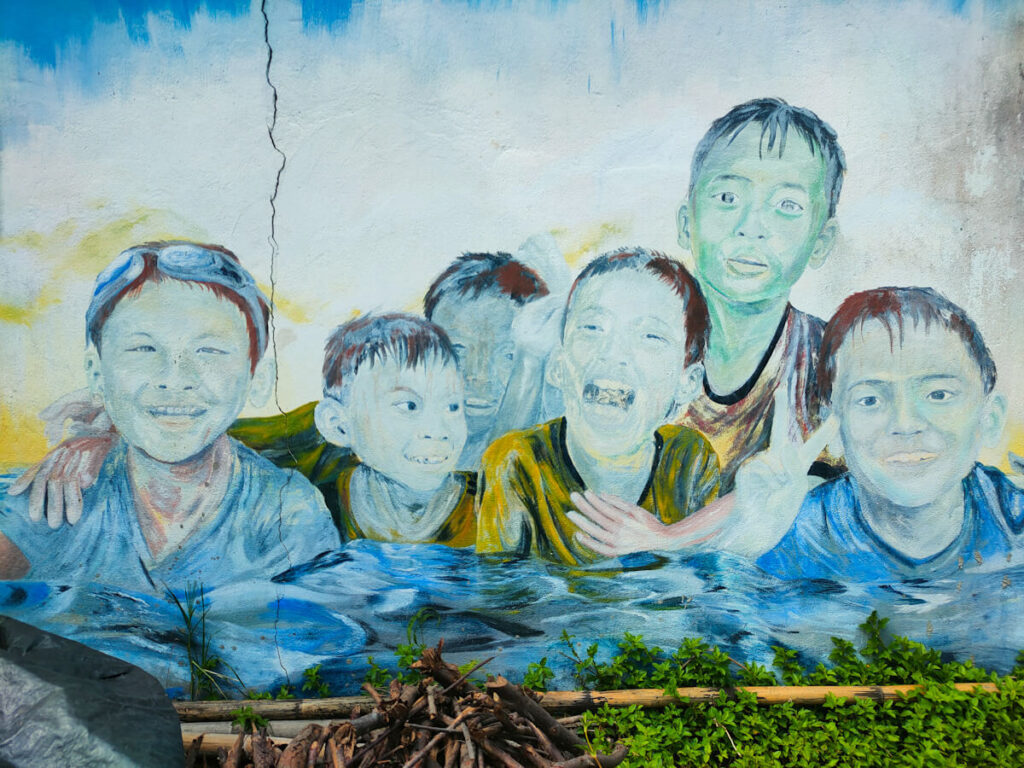
Coming back the way I came I cycled past trees and fields before turning off to the second ferry crossing of the day. This one was a bigger affair, linking the tiny island with the main town of Thon An Hai Tay.
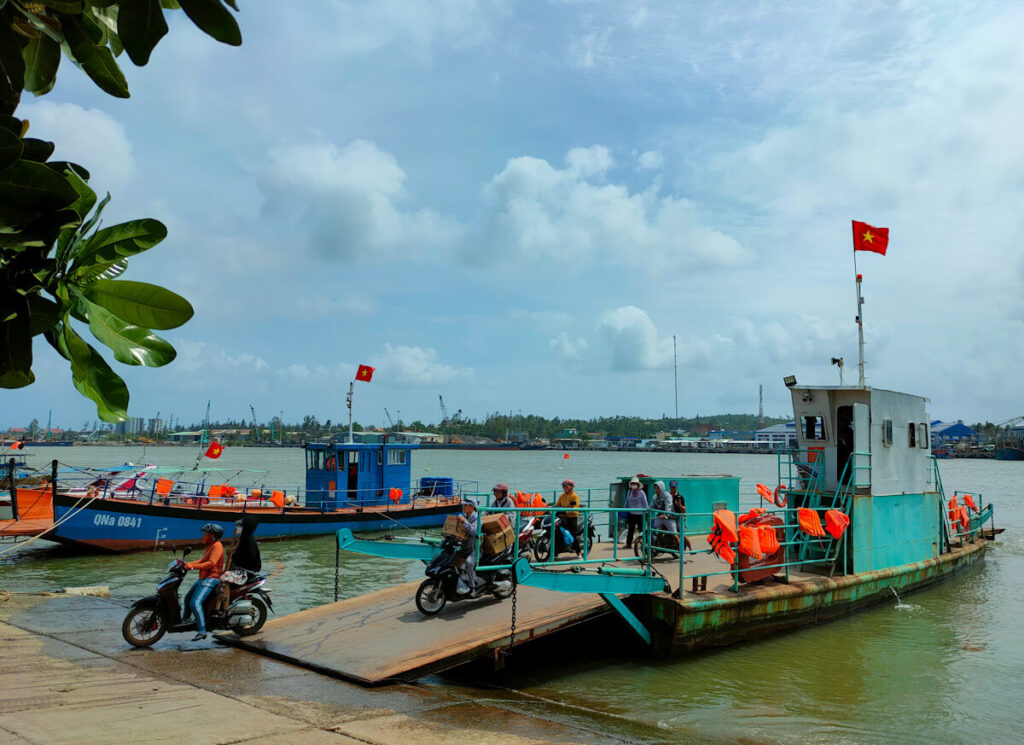
Suddenly I’m hungry and find an enticing unnamed noodle stall on long tables. They prepare a tasty My Quang, a Hoi An speciality.
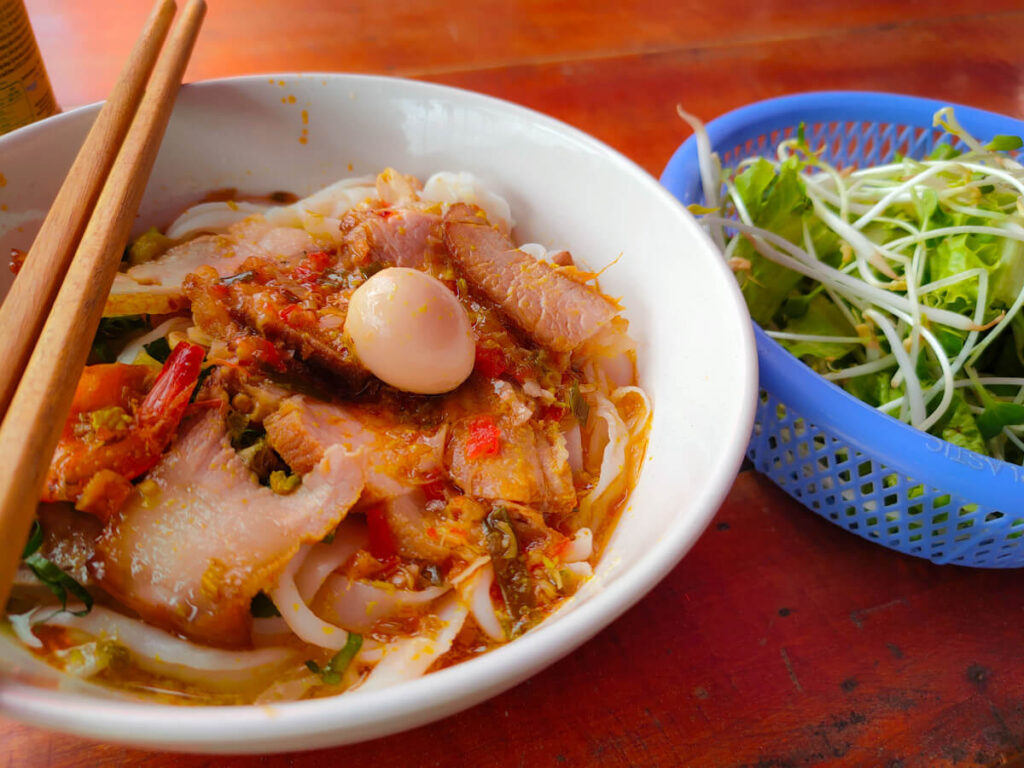
Road to Quang Ngai
The next part of the route is strange rather than lovely. Striking out south towards Quang Ngai I cycle on dead quiet roads through what can only be described as a resort wasteland.
Hundreds of structures flash by, most (from what I can see) abandoned very close to being finished. Most follow a theme inspired by ancient Cham and there is a sad museum with dozens of stone jars. It’s like a scene out of Jurassic Park but on the beach and without the dinosaurs.
All very sad, and probably a by-product of Covid, but I hope someone comes in to save this area before its too late.
While I was able to make fast progress through this section, that quickly changed once I reached a heavy industrial area, where the combination of heat, terrible road quality and large vehicles sapped my will to continue on hilly back roads through this industrial zone.
The alternative was to veer left onto highway 1, which I figured should be ok for 20 kilometres or so.
I was wrong.
This was one of those very narrow and dangerous sections of highway 1, and for the second time in two days I made the spontaneous (and rather lazy decision) to cut the day short.
I find a bus station – and use it
A small, informal bus station just happened to be at the exact point where I joined the highway, and I decided to catch a bus. (Thanh Nga bus station – Click here for reference)
Fed up with the dreary weather and bleak fields, I found myself on a cheery mini-bus ride all the way to the south-central city of Quy Nhon.

